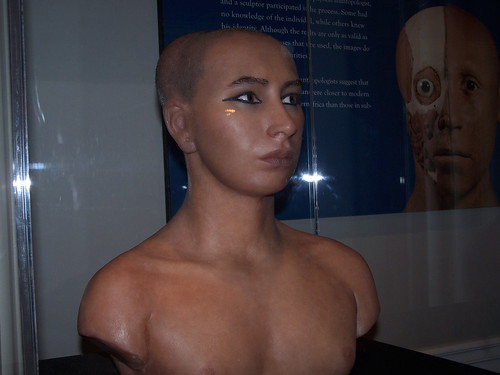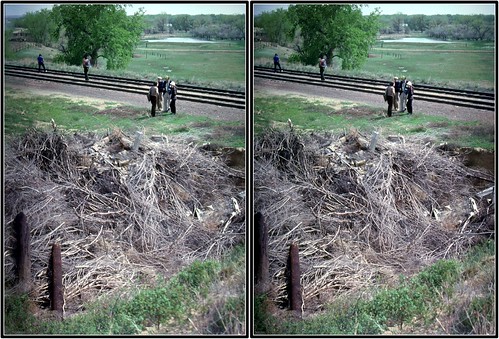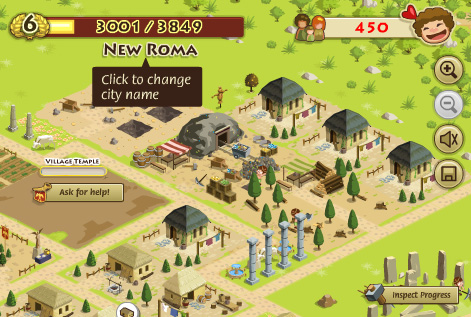 It seems like Im never going to get to build the Pyramids in my ancient Roman settlement never mind the Hanging Gardens of Babylon. Ive spent all my money on lemon trees and fountains and now my people are deliriously happy, but not generating the bucks or resources I need to expand my empire. Its a situation that a lot of social gamers might find themselves in today, as social gaming gurus Playfish launch their latest game on Facebook My Empire.
It seems like Im never going to get to build the Pyramids in my ancient Roman settlement never mind the Hanging Gardens of Babylon. Ive spent all my money on lemon trees and fountains and now my people are deliriously happy, but not generating the bucks or resources I need to expand my empire. Its a situation that a lot of social gamers might find themselves in today, as social gaming gurus Playfish launch their latest game on Facebook My Empire.
My Empire is a city building sim, where the player gets to build a Roman town, unlocking new building types as the game progresses, and (this is the social network part) inviting friends to help them build monuments and other major structures.
We’re All in the Same Bath
Theres a nod at authenticity. The first thing you do as a Roman leader is hire somebody to collect your taxes. Smart move for a growing empire, and one that some of the major builders of Romes empire relied on.
Once youve got your main man on the job, its time to start creating that authentic Roman town. As soon as youve built your first shack built, the wisdom of ancient Rome suggests that you start building public baths in order to make its inhabitants happy. It seems a bit full on recreating the splendour of Bath for a family in a mud hut, but then the baths were an integral part of life for all classes of Roman, and in my Roman town, they shall have bathe like kings. In it goes, along with decorations and monuments to make my shack-dwellers happy, such as flowers and pillars.
Interestingly, in My Empire, a hungry goat generates the same level of fame and glee as an ancient sculpture. Could this form the basis of a like-for-like loan deal for Egyptian antiquities?
Work it, Baby
Like many Empire builders, My Empire places great importance on making the citizens happy in order to get them to build things for you without revolting. In the PC, iPhone and console game Civilization, citizens will revolt and set fire to their own cities if you dont keep them happy with Colosseums, theatres and world wonders perhaps thats what happened to Qin Shi Huangs mausoleum, which, it has just been discovered, was not only vandalised but also set alight, possibly by his angry people? Recent events in Greece also show how close to real life the in-game consequences of an unhappy populace can be.
The fine balance of keeping citizens happy whilst galvanising them to work is one that is trod demonstrably finely by the great cultures of ancient history. As Helen points out in her article, there are no pyramids in Ohio because the leaders there werent brutally self-aggrandising enough, or organised enough, to force people into labour. The Egyptians, on the other hand, kept an extreme level of control over their subjects, not through brutality (although the behaviour of Akhenaten doesnt win him any points), but through the instigation of a complex religious system that was the basis of all behaviour, from health and beauty to gaming.
Rule Like a Roman
The Romans had a different means of control they taxed high and then wooed their subjects with cool communal baths, great food, decadent parties (ok, for the rich), and a whole raft of improvements such as aqueducts, social reform, and roads (watch this hilarious Monty Python sketch for a full list).
In our recent fantasy election, the two main parties that emerged were Emperor Augustus with his policy of a corn dole for all people, and Alexander the Great with his high taxes, war, and investment in education. Britains new Tory government should take notes tax em high, keep em happy Alexander came out tops. Just saying.
Other structures that youd expect to see in an ancient Roman town are all there too the arena, the court, the temple, as well as functional structures such as farms, mines and workshops. Some of these you can drop right in straight away, but for others you need to entice your Facebook friends to join you as neighbours and help with the build.
Im currently trying to galvanise the staff of Heritage Key to help me build a temple for my Sims. Its not easy. All credit to any world leader who manages to get these things off the ground.
Seven Roman Wonders of the Ancient World?
Interestingly for an authentic Roman city, I am also able to build some of the Seven Wonders of the Ancient World, plus extras. The Pyramids, the Colossus of Rhodes, the Hanging Gardens of Babylon, and the Lighthouse of Alexandria are all there in the line-up, plus you can build Stonehenge, the Parthenon and the Great Sphinx, as well as a Victory Arch. The real Romans would have loved to get their hands on such wonders.
Im currently building Stonehenge, on the beach, in my fantasy Roman town. But Ive run into a major obstacle I seem to have run out of tar, which is seemingly a key ingredient in a pile of big stones. Perhaps Ill need to duck into Stonehenge Virtual to ask advice from the builders in there? In the meantime, come on Ann, Sean, Meral, Malcolm and Prad and anyone else who would like to change history – help me build this temple!

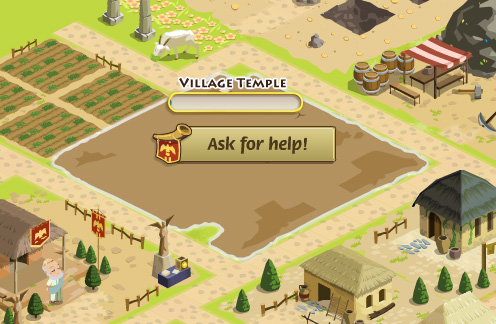
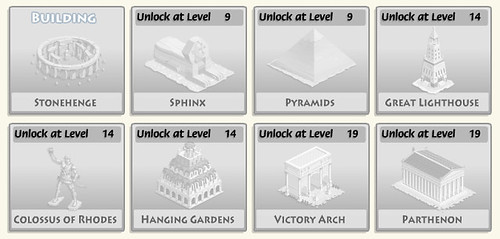


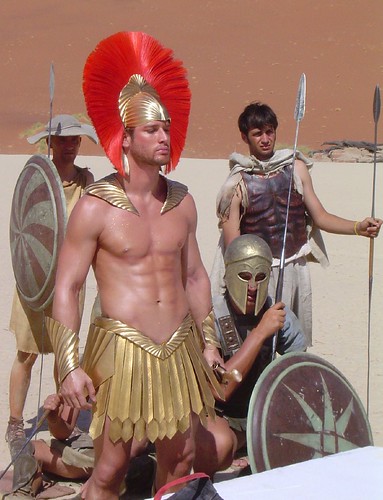
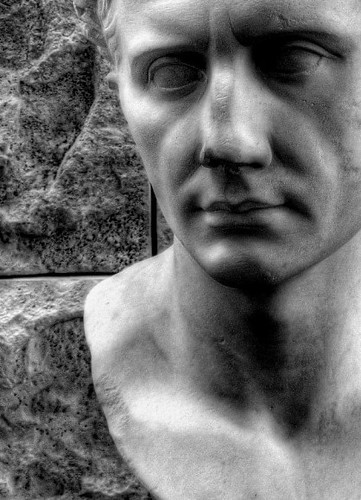



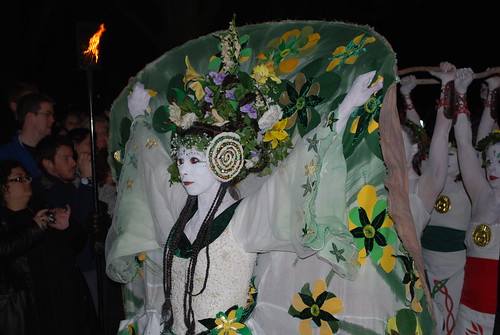
 I went to see
I went to see  How to Tame Your Dragon is really about the way in which we create divisions and make assumptions about little-known and different nations. This must have happened all the time, we think, back in the time of the Vikings, when cultures were still
How to Tame Your Dragon is really about the way in which we create divisions and make assumptions about little-known and different nations. This must have happened all the time, we think, back in the time of the Vikings, when cultures were still  I asked my 4-year-old which character hed liked the most in the film. Without hesitation he replied The big Viking, because he was the best fighter. Not the boy who was the first Viking ever to make friends with a dragon and (minor spoiler alert) go on amazing dragon rides? Or the cool girl Viking?. No the big Viking, because he was the best fighter. Of course.
I asked my 4-year-old which character hed liked the most in the film. Without hesitation he replied The big Viking, because he was the best fighter. Not the boy who was the first Viking ever to make friends with a dragon and (minor spoiler alert) go on amazing dragon rides? Or the cool girl Viking?. No the big Viking, because he was the best fighter. Of course.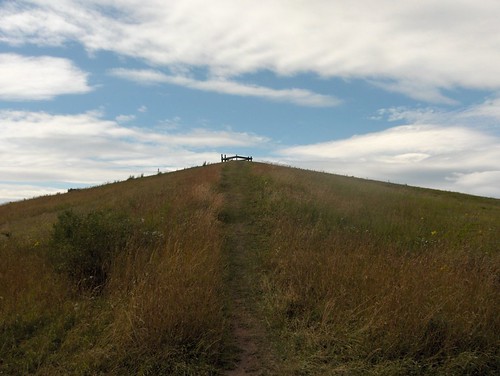
 Museums, publishers and heritage sites are also threatened by the economic crisis. Publishers
Museums, publishers and heritage sites are also threatened by the economic crisis. Publishers 